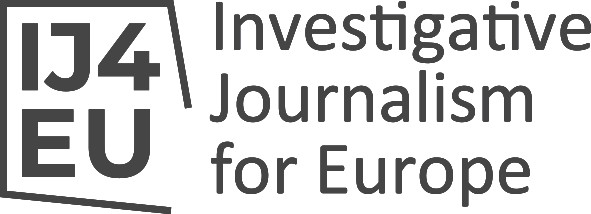Financial support from Hungary: has the money tap been closed for Slovakia as well?
30.03.2022

Karin Kőváry Sólymos
The decrease in funding has impacted Slovakia as well: while in 2020 entities from Slovakia received about 9,2 billion forints (26,3 million EUR), in 2021 this funding decreased to one third. Big investments are missing, the usual big winners received symbolic grants.
The Hungarian Permanent Conference (MÁÉRT), the contact point between the Hungarian government and the Hungarian ethnic communities beyond the borders of Hungary, decided in January 2021 that 2021 would be the year of Hungarian national rebirth after the hard pandemic year. In this context, the government promised that national policy programmes would continue in a renewed form, but no word was uttered about the amount of the financial support.
As we wrote earlier, the Hungarian government led by FIDESZ invested billions of forints every year in the Hungarian communities of neighboring countries. Most of the state grants for national policy purposes are disbursed by the Bethlen Gábor Fund (BGF). In 2021, however, compared to previous years, the fund provided significantly less financial support to organisations beyond the borders, including Slovakia. On the decision lists, we searched in vain for big grants amounting to billions of forints.
According to the calculations done by Átlátszó Erdély, the Bethlen Gábor Fund disbursed some HUF 32.3 (EUR 91.5 million) last year for the Hungarian organisations beyond the borders of Hungary. This amounts to merely a quarter of the overall financial aid approved for 2020 (HUF 129 billion, EUR 365 million). This decline is truly spectacular because the amount of subsidies allocated to the BGF had steadily increased since the second Orbán government, with the exception of 2019.
The decline can also be seen in the grants awarded to the Slovak organizations, although there is no clear trend in their case. But while in 2020, the BGF (according to the updated decisions) approved around HUF 9.2 billion (EUR 26.3 million) for the Slovak entities, the amount in 2021 was only one third of the former sum, i.e. less than HUF 3.1 billion (EUR 8.5 million). The “2021 National Reform Program 2021” disbursed further HUF 282 million for the Hungarian organisations in Slovakia. At the same time, the total amount of the financial support in Slovakia amounts to EUR 9 million.
The reasons for the decrease
As pointed out by Átlátszó Erdély, the reasons for the significant decrease in 2021 can only be guessed at, neither the Bethlen Gábor Fund nor the Hungarian Government have provided an official explanation so far. However, it is probable that Hungary’s record budget deficit of HUF 5,100 billion also played a role in the decrease in the financial support awarded abroad.
Interestingly enough however, in the pandemic year of 2020, when the Hungarian budget deficit was even higher, the Hungarian government had no problem paying more than three times the planned foreign financial aid through the BGF.
Are the massive grants and investments gone?
In recent years, the BGF has usually awarded exceptionally high grants to the Slovak Reformed Christian Church, the DAC Football Academy, the Komárom Football Club, the Pro Media Foundation and the Foundation for the Future. However, in the list of projects approved for 2021, we would be looking in vain for football clubs or any media foundation. While the other top winners of 2021 were financed with merely symbolic sums compared to previous years.
One Slovak institution of national importance i.e. the Association for Common Goals (SZAKC) – was also missing from the 2021 list. The organisation unites educational, youth and cultural organisations in Slovakia, and is also the publisher of the Felvidék.ma portal.
We contacted the president of the organisation, László Gubík who said that there was no reason to assume that the SZAKC, as a key national institution, would not receive funding this year. However, he drew our attention to the fact that the Bethlen Gábor Fund grants are usually awarded and disbursed in the current year. “The amount of the grant in 2021 was an exception anyway. The decision had already been made in December 2020” – he said. The organisation eventually got a promise at the beginning of March this year that the BGF would support its operations with HUF 78 million this year. It is not known when the amount will arrive.
Like SZAKC, the Pro Media Foundation, one of the most generously financed organisations in recent years, received promise for this year’s grant only in early 2022. The BGF grant is key to the survival of the organisation, as more than 95 % of their income is subsidised by the Hungarian state fund.
Earlier, we also asked Attila Puskás, the manager of the Pro Media Foundation whether the Ma7 project was viable even without Hungarian funding. Furthermore, we were interested in the extent to which the Foundation and the MA7 media group they operate were affected by not being included on the 2021 decision lists. Puskás did not wish to answer our questions although the decision to finance them in 2022 had already been made only a few days earlier.
No funding for football
In addition to culture and education, Viktor Orbán’s favourite sport, football, has become one of the most financed fields outside Hungary in recent years. Millions flowed from the Hungarian government to the Komárom football club and the DAC football academy in Slovakia, run by the daughter of Orbán’s old friend, Oszkár Világi. None of these organisations will be among the projects approved for 2021.
The Bethlen Gábor Fund (BGA) rewarded the Komárom club with significant sums. In 2019, KFC approved HUF 300 million (almost EUR 1 million) as operating costs, and by 2020 an additional HUF 260 million (more than EUR 860,000). That year, KFC received less money from the Hungarian government to cover its operating costs but received approval to build the stadium for a total amount of EUR 6.04 million. By 2021, the club had received HUF 590 million in support for its operating costs and development based on individual applications. The total value of the renovation and upgrading is envisaged to amount to around EUR 11 million VAT excluded. We tried to find out from KFC Vice President Béla Szüllő if the football club had asked for further BGF support. He promised to answer our questions, but later didn’t pick up the phone.

The DAC has previously received similarly generous grants from the BGF. The fund also contributed to the establishment and operation of the academy. In December 2018, on behalf of the DAC Academy, Réka Világi, president of the academy, requested a grant of HUF 1.35 billion (over EUR 4 million). The BGF approved the application. At the end of 2019, the DAC Academy applied again for a grant from the Hungarian Government, receiving about EUR 2 million, and in 2020, a bit less than EUR 7 million, which can be considered outstanding.
Although based on previous decisions, it may have seemed that the projects of the above-mentioned football clubs could count on the long-term support from the Hungarian government, we did not find them in the 2021 decisions.
Translation by Auguszta Szász. Original article, in Hungarian, is available here.
Cover photo: Hungarian prime minister Viktor Orbán visits the DAC Football Academy together with Hungarian-Slovakian businessman Oszkár Világi. Photo source: Facebook
This article is part of our project aiming to monitor the 2022 parliamentary elections in Hungary. The project was funded in part by a grant from Investigative Journalism Europe (IJ4EU) and a grant from the United States Department of State. The opinions, findings and conclusions stated herein are those of the author[s] and do not necessarily reflect those of the funders.
